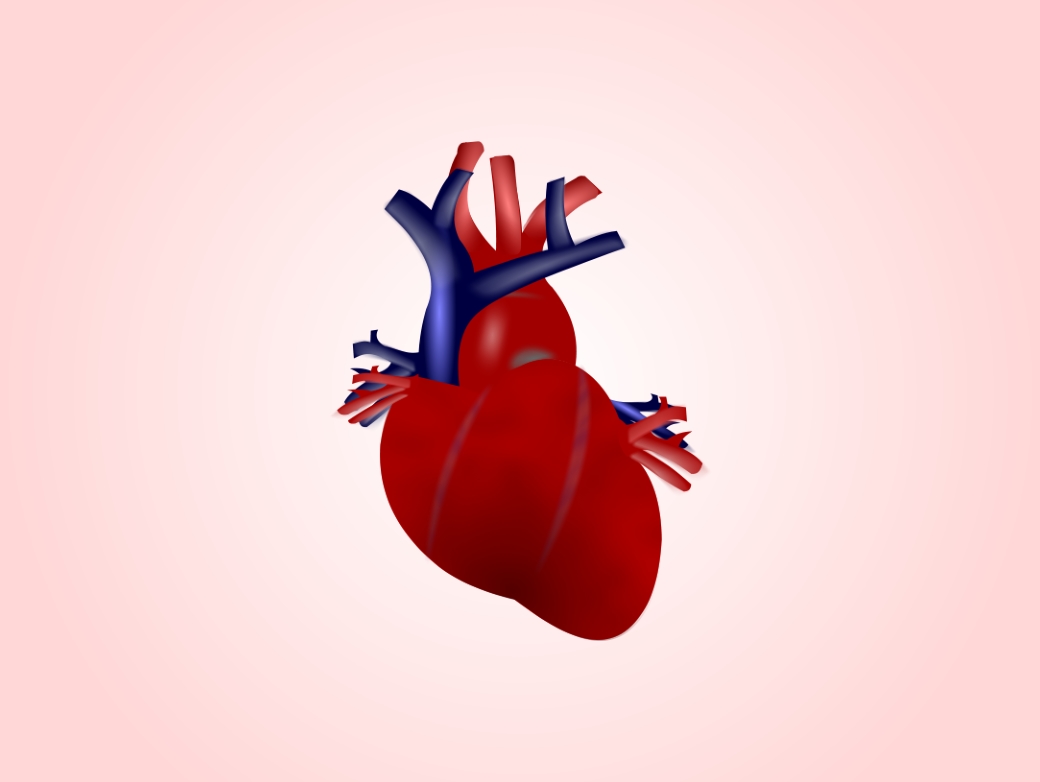The heart begins to work even before it is fully formed

The number of contractions of a person’s heart muscle throughout his life is approximately 2.5 billion. It’s not so difficult to find out when the heart is falling for the last time, doctors do it very often, unfortunately. But when does a man’s heart start beating? Not much is known about this.
Now scientists have decided to track the formation of the heart, starting from the early stages of embryo development. The results of their research experts published in the scientific journal eLIFE . The study, considered by the project participants, will be important for the development of regenerative medicine, as well as help to understand how to grow the heart in the laboratory.
The heart is formed first in the body of the embryo. This organ is already in its early stages of development of the embryo begins to work, sending oxygen and nutrients to all the tissues of a growing organism. In mice, for example, the heart appears within a week after conception. This is not a complete organ, but a set of cells that gradually develop from stem cells, forming the heart. After another day, a recognizable heart appears in the mouse embryo, which begins to work for the benefit of the whole organism.
')
Initially it was thought that the heartbeat begins immediately after the formation of the heart tube. But as it turned out, it is not. The tissues of the future “blood pump” are active when the first cardiomyocytes appear - heart cells that have not yet formed a full-fledged organ.
First, cardiomyocytes work separately, synchronous contraction begins after the individual cells unite into a full-fledged tissue of the heart muscle. Reduction of cardiomyocytes is due to the transition of calcium ions through the cell membrane. The first cuts can be observed as early as 12 hours after conception. Mouse embryos develop very quickly, much faster than human embryos. The 12th hour of fetal mouse development corresponds to the 20th day of the human embryo. By this time (the 20th day), the human embryo is already worm-shaped, it still has no arms, no legs, no head. True, the brain is already beginning to form. And at this time, cardiomyocytes begin to work.
As the calcium concentration in cardiomyocyte increases, the cell shrinks, and when it decreases, it relaxes. The system of such cells is a synchronous cardiac muscle. In order to track the first cuts in cardiomyocytes, scientists were constantly observing the embryos of mice. The control action is an increase in the level of calcium, which should lead to a reduction in heart cells. In the early stages, this key mechanism of the heart is absent - calcium has almost no effect on the cells.
In order to catch the manifestation of the first foci of cardiomycetes activity, the experts injected a fluorescent calcium solution. As soon as this was done, it became immediately possible to observe the work of cardiomycites, both as individual cells and as a whole.
 “We were surprised by the fact that the cells change the concentration of calcium inside themselves even before the“ calcium ”mechanism of the reduction of the cells themselves begins to work. One would expect the cell reduction mechanism to form first, after which it all begins to work under the influence of calcium, but no, the system of calcium ion circulation manifests itself first, ”says Shankar Srinivas, a professor of biology at Oxford University.
“We were surprised by the fact that the cells change the concentration of calcium inside themselves even before the“ calcium ”mechanism of the reduction of the cells themselves begins to work. One would expect the cell reduction mechanism to form first, after which it all begins to work under the influence of calcium, but no, the system of calcium ion circulation manifests itself first, ”says Shankar Srinivas, a professor of biology at Oxford University.The cycle of changes in the concentration of calcium ions is needed by the body for a reason. It seems that the presence of the calcium cycle is important even for the very process of heart formation. When blocking calcium intake in cardiomyocytes with the help of special preparations, scientists observed the absence of the process of the formation of high-grade heart muscle cells.
This discovery sheds light on the very beginning of the formation of various organs of the embryo. As we can see, in some cases, the formation of an organ requires the molecular action of specific compounds or elements.
In the case of the formation of the heart, the “calcium cycle” begins to work in various places of the future heart. But after a few hours (in the case of monitoring the mouse embryo), synchronous work begins. Cardiomyocytes gradually “learn” to work synchronously, begin to pulsate, and this pulsation becomes noticeable. Scientists are still continuing research in this direction, in order to better understand the mechanism of heart tissue formation. Perhaps this will help grow if not whole hearts, then heart tissue in laboratory conditions. In addition, the results of observations may be useful for the study of heart disease.
“One of the main problems of regenerative medicine is the development of a mechanism capable of making the heart muscle cells beat simultaneously. If we better understand this mechanism, having studied it in the process of formation, then we will be able to create fabrics with synchronous work, ”the study participants say.
DOI: http://dx.doi.org/10.7554/eLife.17113
Source: https://habr.com/ru/post/398273/
All Articles